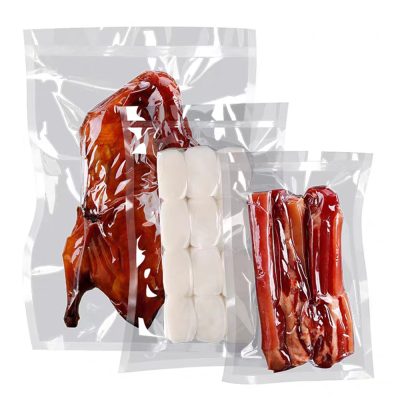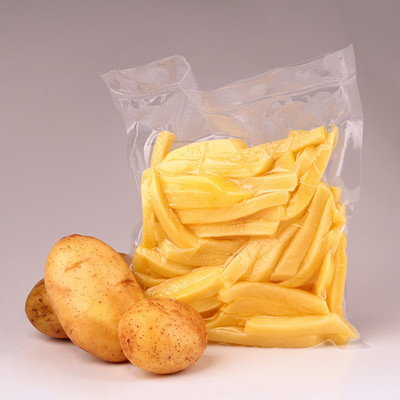The term “vacuum” in a vacuum packaging bag is translated from the Latin word “vacuo”, which means nothingness. In fact, vacuum should be understood as a space where gas is relatively rare. In a designated space, the gas state below one atmospheric pressure is collectively called a vacuum. The degree of gas rarefaction in a vacuum is called the degree of vacuum and is usually expressed by pressure. Therefore, vacuum packaging is actually not completely vacuum. The vacuum degree in food containers packaged by vacuum packaging technology is usually 600-1333Pa (standard atmospheric pressure: 101325Pa). Therefore, vacuum packaging is also called vacuum packaging or exhaust packaging.
Food vacuum packaging bags are widely used in the food industry. This is precisely because vacuum packaging draws out all the air in the package and seals it to maintain a high degree of pressure in the bag. The scarcity of air is equivalent to a low-oxygen effect, so that microorganisms have no living conditions. To achieve the goal of fresh food and no disease and rot. In addition to inhibiting the growth and reproduction of microorganisms, vacuum deoxygenation is another important function to prevent food oxidation. Because fats and oils contain a large amount of unsaturated fatty acids, they are oxidized by the action of oxygen, which makes food taste and deteriorate. In addition, oxidation also causes Vitamin A and C are lost, and the unstable substances in food pigments are affected by oxygen to darken the color.
Therefore, deoxygenation can effectively prevent food from spoiling and maintain its color, aroma, taste and nutritional value. Generally, it plays a role in salt-baked foods, pickles, soy products, meat products, convenience foods, soft cans, etc. In addition, there are many foods that are not suitable for vacuum packaging and must be vacuum-filled, such as crispy and fragile foods, foods that are easy to agglomerate, foods that are easy to deform and oily, foods with sharp edges or corners or high hardness that will pierce the packaging bag, etc. . In addition to the oxygen-removing and quality-preserving functions of vacuum packaging, the main functions of vacuum inflatable packaging include compression resistance, gas barrier, and freshness preservation, which can more effectively maintain the original color, aroma, taste and shape of food for a long time. And nutritional value.
China’s vacuum packaging technology was developed in the early 1980s, and vacuum inflatable packaging technology began to be used in small quantities in the early 1990s. With the promotion of small packaging and the development of supermarkets, its application scope is becoming more and more extensive. Some will gradually replace hard packaging, and the prospects are very promising.




















